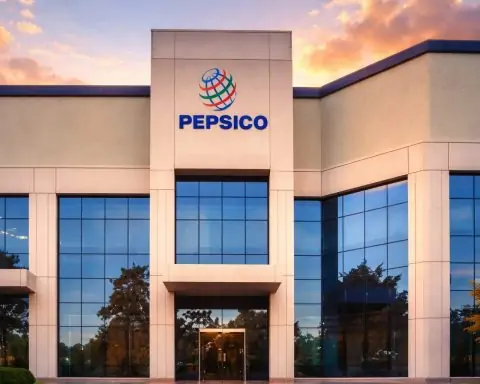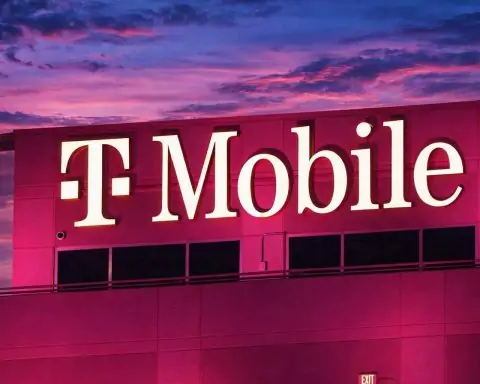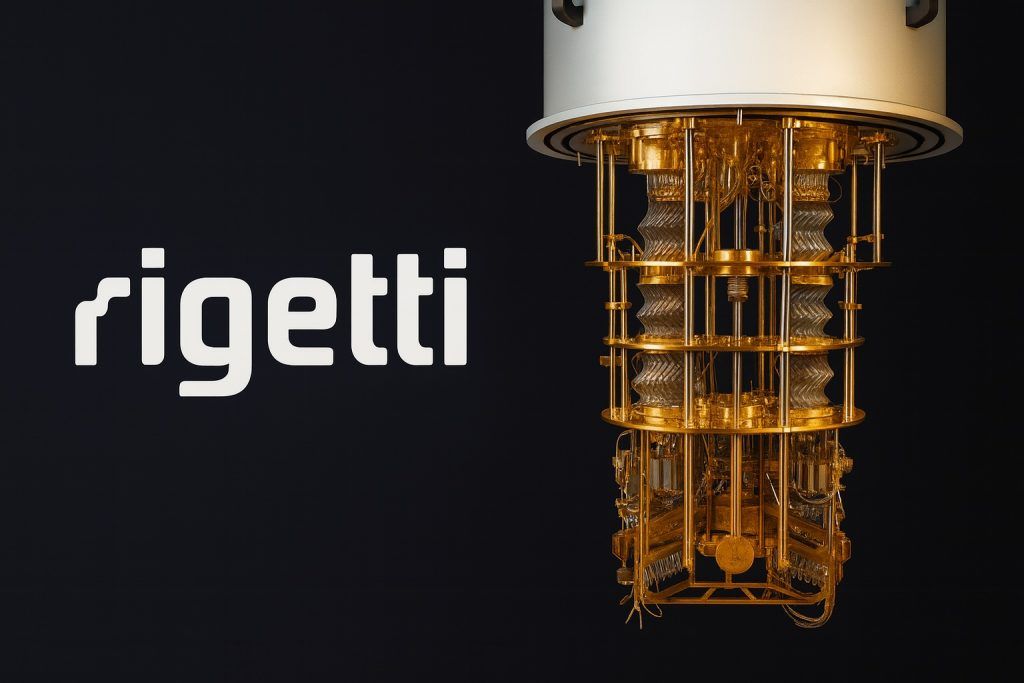- Record Surge: Navitas Semiconductor (NASDAQ: NVTS) stock leapt to around $15.63 on October 16, 2025 – a fresh 12-month all-time high – after a five-day rally nearly doubled its share price [1]. The stock is now up over 330% year-to-date (about +520% from a year ago) [2], making it one of the semiconductor sector’s top performers this year.
- NVIDIA AI Catalyst: The rally was sparked by Navitas’s new GaN/SiC power chip launch for NVIDIA. On Oct. 13, Navitas announced it developed advanced gallium nitride (GaN) and silicon carbide (SiC) devices purpose-built for NVIDIA’s next-gen 800‑volt DC “AI factory” data centers [3] [4]. This NVIDIA collaboration – a major validation of Navitas’s technology – sent NVTS shares up 21% in one day and ignited continued gains [5].
- New Partnerships & Pivot: Navitas is aggressively pivoting from phone chargers to AI and EV markets under its new CEO, former Renesas executive Chris Allexandre [6]. This week it also launched a joint “Digital Power” lab with GigaDevice of China to co-develop high-efficiency power solutions for AI servers, electric vehicles and renewable energy systems [7]. The partnership leverages GigaDevice’s microcontrollers with Navitas’s fast GaN/SiC chips, underscoring Navitas’s strategic shift into cutting-edge data center and EV power applications.
- Rich Valuation: The market cap has swelled to roughly $3.3 billion, valuing Navitas at a steep ~30× forward sales [8] while the company remains unprofitable. Wall Street’s average price target for NVTS is only about $5–6 per share [9] – far below the current price – reflecting cautious expectations for near-term fundamentals. Short interest is elevated (~25–28% of the float) [10], indicating many traders are betting against the stock’s lofty valuation.
- Bull vs. Bear Views:Bulls tout Navitas as “one of the most important growth stories of the decade” in the AI/EV chip arena [11] [12], citing its unique pure-play GaN/SiC focus and the NVIDIA tie-up. Bears counter that an “enormous amount of growth is already baked into the stock price,” warning that much of the NVIDIA-driven optimism is “priced in” and that execution risks remain if big AI revenues don’t materialize quickly [13] [14]. Analysts urge caution given the rapid run-up and lack of near-term earnings, even as they acknowledge Navitas’s long-term potential in high-voltage chips.
Stock Soars to Record High on AI News
Navitas shares have been on a tear in mid-October, riding a wave of AI enthusiasm. The stock closed at $15.63 on Oct. 16 (up +3.1% for the day) [15], marking its fifth straight daily gain and a new all-time high. In the span of a week, NVTS nearly doubled in price, skyrocketing from the ~$8 level to the mid-$15s. This explosive move caps a year of extraordinary gains – over 330% year-to-date – amid intense investor interest in any company tied to the AI hardware boom [16]. For context, Navitas has vastly outperformed the broader chip indices in 2025, fueled by a series of upbeat announcements and a rush of trading volume (on Oct. 13, volume spiked ~5× above average) [17]. Many observers describe the recent price action as a “shoot to orbit” for the once-obscure small-cap stock.
What’s driving the surge? In large part, Navitas’s partnership with NVIDIA – revealed in an Oct. 13 press release – has been the catalyst. Navitas unveiled new 100 V GaN power transistors and 650 V GaN/SiC power devices specifically designed to enable NVIDIA’s next-generation 800 V DC data center power architecture [18]. NVIDIA has been touting a vision of so-called “AI factories” – massive AI supercomputing data centers that run on 800-volt DC power rails instead of today’s ~54 V systems [19]. The jump to 800 V allows far more power delivery (150%+ more through the same copper wiring) and higher efficiency for the megawatt-hungry AI servers powering advanced models [20] [21]. Navitas’s newly announced chips are meant to tackle this power challenge, serving as critical components in converting and distributing the high-voltage DC down to usable levels for GPUs.
The market seized on this news as a game-changer for Navitas. The day the NVIDIA collaboration was announced, NVTS jumped 21% to ~$9.97 [22], and the momentum only accelerated: the stock continued to surge in after-hours and pre-market trading, at one point up ~26–27% by the next morning [23]. By Oct. 16, Navitas had logged an astounding ~96% gain in just five sessions, and hit prices never seen before in its trading history. This streak of fresh highs firmly put Navitas on the radar of many traders who follow “AI plays.” Even Navitas’s management seemed energized by the NVIDIA tie-up – CEO Chris Allexandre lauded it as a breakthrough, saying “As NVIDIA drives transformation in AI infrastructure, we’re proud to support this shift with advanced GaN and SiC power solutions that enable the efficiency, scalability, and reliability required by next‑generation data centers.” [24] The endorsement by NVIDIA (the world’s leading AI chip maker) has given Navitas a powerful credibility boost almost overnight.
Recent Catalysts: NVIDIA Deal and New Partnerships
The NVIDIA collaboration is undoubtedly the headline catalyst, effectively positioning Navitas as a potential supplier into NVIDIA’s future AI data centers. Analysts note that being tapped for NVIDIA’s 800 V “AI factory” initiative is a strong validation of Navitas’s GaN/SiC technology [25]. It implies that Navitas’s chips met the demanding requirements for efficiency and power density that next-gen AI infrastructure needs. In practical terms, Navitas stands to benefit if NVIDIA’s 800 V architecture gains widespread adoption: the first such AI data center racks (code-named Rubin Ultra) are slated for 2027, featuring hundreds of GPUs and megawatt-level power draw on 800 V rails [26]. Industry-wide interest is high – at a recent Open Compute Project summit, over 20 companies showcased 800V DC solutions for these “gigawatt AI factories,” from power giants like ABB and Vertiv to chipmakers like Analog Devices, Onsemi, Infineon and Renesas [27] [28]. This broader context suggests Navitas is riding a real trend (the shift to 800 V data centers), not just a one-off announcement.
In addition to the NVIDIA news, Navitas unveiled another partnership this week that is feeding investor optimism. Navitas and GigaDevice, a major Chinese semiconductor firm, announced a joint “Digital Power Joint Lab” aimed at developing next-generation high-efficiency power solutions [29]. The lab will combine GigaDevice’s microcontroller (MCU) expertise with Navitas’s high-speed GaN and SiC power chips to create advanced reference designs for AI server power supplies, electric vehicle chargers, solar inverters, and energy storage systems [30] [31]. Notably, the collaboration has already yielded prototype designs – including a 12 kW AI server power supply that achieves an impressive 97.8% peak efficiency using Navitas’s GaN and SiC devices alongside GigaDevice controllers [32]. By teaming up with GigaDevice (known for its MCUs and memory chips), Navitas could accelerate its penetration into Asian data center and EV markets. Investors see this as further evidence of Navitas pivoting toward high-growth applications (and away from its legacy focus on smartphone chargers).
These moves are part of a broader strategic shift at Navitas that has been underway through 2025. The company’s co-founder and former CEO, Gene Sheridan, stepped aside in September to become Executive Chairman, recruiting Chris Allexandre (a veteran from Renesas) as the new CEO and President effective Sept. 1 [33]. Allexandre was brought in specifically to drive Navitas’s expansion in AI data centers, EVs, solar power, and smart grid applications, leveraging his background in the power semiconductor industry [34]. Under this new leadership, Navitas has been exiting low-margin consumer electronics segments and doubling down on the biggest electrification trends. In Q2 2025, the company raised $100 million in fresh capital via a stock offering to fund this expansion [35], boosting its cash reserves (now ~$161 M as of mid-year) [36] for R&D and capacity investments. For example, Navitas struck a deal to migrate its chip production from 6-inch to 8-inch GaN wafers, partnering with Taiwan’s Powerchip – a move expected to increase chip output ~80% per wafer and lower costs as volume production kicks in by 2026 [37]. All of these developments – NVIDIA’s endorsement, new joint ventures, manufacturing scale-up, and a leadership refresh – have created a narrative that Navitas is positioning itself as a key player in the next wave of high-power semiconductors. That narrative has clearly resonated with investors, who have bid the stock up aggressively on any hint that Navitas could capture a slice of the booming AI infrastructure market.
Financial Performance and Forecasts
Despite the stock’s sharp rise, Navitas’s current financials remain those of an early-stage growth company in transition. The pivot from consumer chargers (where demand has sagged) toward AI, electric vehicles, and other industrial markets has actually caused revenues to dip in the near term. In the second quarter of 2025, Navitas reported sales of only $14.5 million, down 29% from the $20.5 M in the year-ago quarter [38]. Full-year 2025 revenue is projected around $48–54 million, a ~40% drop from 2024 [39] as legacy product lines fade. However, analysts expect this to mark the bottom: by 2026, revenue is forecast to stabilize or modestly rebound (into the low $50 M range), and by 2027, sales could nearly double to ~$95 M as AI-related shipments finally ramp up [40]. In other words, the big NVIDIA-driven data center orders aren’t expected to hit the top line until 2027 at the earliest (since NVIDIA’s 800V platform rollout is a couple of years out). Likewise, Navitas’s push into EV and solar markets may take time to translate into sizable revenue.
On the profitability front, Navitas continues to post losses as it invests in R&D and market expansion. The company lost about $21.7 M (GAAP operating loss) in Q2 2025, and a net loss of $0.05 per share for the quarter [41]. Wall Street consensus predicts a full-year 2025 loss of roughly $0.50 per share [42]. Some improvement is in sight – the annual loss is expected to narrow to ~$0.19 per share in 2026 as revenues begin to recover [43]. Still, breakeven or profitability isn’t anticipated until 2027 or later, according to most estimates [44]. Navitas’s management has stated it is prioritizing growth over short-term profits, aiming to secure design wins in AI, EV, and renewable sectors that can drive exponential revenue in a few years. In the meantime, the company’s balance sheet is relatively strong for a small cap: thanks to the recent $100 M capital raise, Navitas had about $161 M in cash and negligible debt as of mid-2025 [45]. This liquidity gives it a buffer to weather current losses and fund expansion. Analysts like Deutsche Bank have noted Navitas’s healthy current ratio (~5.6) and substantial cash reserves, which mitigate the risk of any immediate financial crunch [46]. The focus now is on execution – Navitas must convert its technological ties (like the NVIDIA partnership) into actual revenue contracts over the next 1–2 years to justify its valuation.
Technical Analysis and Trading Signals
The breathtaking rise in NVTS shares has also pushed the technical indicators into extreme territory. Navitas’s stock is trading far above its long-term trend lines – as of Oct. 16, NVTS sits ~118% above its 50-day average and ~225% above its 200-day moving average [47]. Such a gap indicates strong upward momentum, but also suggests the stock is “overbought” in the short term. The Relative Strength Index (RSI), a momentum oscillator, is in the 70–90 range (Finviz showed an RSI near 90) – well above the typical overbought threshold of 70 [48]. This means the stock has moved up very quickly and could be due for a breather or consolidation. Likewise, volatility measures are elevated: NVTS has a beta around 2.9–3.0, roughly triple the market volatility [49]. On October 13, trading volume topped 124 million shares (about 5× the norm) [50], indicating a flood of speculative trading and likely some short covering (bearish traders buying back stock to cover positions) contributing to the spike.
Another notable factor is the huge short interest in Navitas. Roughly 25–28% of the floated shares are sold short [51], meaning a significant number of investors are betting the stock will fall. This high short interest can amplify volatility in both directions. On the way up, it can fuel a “short squeeze” as soaring prices force skeptics to buy back shares (pushing the rally further). Conversely, any negative news could trigger a swift pullback as momentum buyers retreat and short-sellers pile on. Market technicians point out that NVTS’s chart has gone parabolic in recent weeks – a sign of euphoria – and that sharp swings are to be expected. “After such a 20%-plus gap-up, profit-taking or a consolidation could follow,” one analysis noted, cautioning traders not to chase the stock without regard for the risks [52]. In summary, Navitas’s short-term technicals flash caution even though the long-term trend is still decidedly upward. Investors may see rangebound trading or even a pullback in the near term as the stock digests its huge gains. Key support levels might be far below (some observers point to the $8–10 zone as a potential support if a correction occurs), given that NVTS has effectively left behind its previous trading range.
Broader Semiconductor Sector Context and Peers
Navitas’s story is unfolding against a dynamic backdrop in the power semiconductor industry, especially around wide-bandgap materials GaN and SiC. These new materials are considered “game-changers” for high-power, high-efficiency applications. Gallium nitride (GaN) and silicon carbide (SiC) devices can switch electricity much faster and with far lower losses than traditional silicon-based power chips, which means they waste less energy as heat [53] [54]. This advantage translates into smaller, cooler, and more efficient power electronics – a crucial need for things like fast chargers, electric vehicle inverters, and yes, large-scale data centers. Navitas, being a pure-play in GaN and SiC, has been at the forefront of commercializing these chips (for example, its GaNFast™ power ICs were among the first GaN chips used in smartphone quick chargers). Now the company is aiming to bring those efficiency gains to AI supercomputing and EVs, where the stakes (and power levels) are much higher. Navitas claims its latest GaN devices can boost efficiency by ~40% and switch 100× faster than silicon chips [55] – a leap that could significantly reduce energy consumption in server farms and electric cars.
It’s worth noting, however, that Navitas is far from alone in pursuing the GaN/SiC opportunity. In fact, the drive toward 800V architectures in data centers and vehicles has become a sector-wide race. On Semiconductor (ON), for instance, has a sizable Silicon Carbide business and recently announced its own partnership with NVIDIA to develop 800V power modules for AI data centers [56]. Infineon Technologies and STMicroelectronics, two of the world’s largest power semiconductor firms, have also been named as collaborators on NVIDIA’s 800V data center initiative [57] – both companies have extensive GaN and SiC product lines (Infineon acquired GaN Systems Inc. in 2023 to bolster its portfolio). In the electric vehicle realm, Wolfspeed (WOLF) is a pure-play SiC leader, investing over $3 billion in a new U.S. fab to supply the EV market [58]. Renesas (one of Navitas’s early investors and now the employer of its CEO) bought GaN startup Transphorm in 2023, and Efficient Power Conversion (EPC) is another GaN-focused private firm competing for design wins. Even analog chip incumbents like Analog Devices and Texas Instruments are developing GaN-based power ICs for data centers and industrial uses [59]. In short, Navitas faces competition from both nimble startups and industry giants.
What differentiates Navitas is its small size and singular focus – it’s one of the few publicly traded companies devoted entirely to GaN/SiC power semiconductors [60]. This focus can be a double-edged sword. On one hand, Navitas can move quickly and innovate to stay on the cutting edge of GaN/SiC tech. It has to, in order to “out-innovate” larger rivals and win design slots in high-profile projects [61]. On the other hand, Navitas lacks the manufacturing scale, customer reach, and deep pockets that players like Infineon, STMicro, or ON Semi have. Those firms are deeply entrenched with top-tier clients and can afford to offer complete power solutions (and sometimes lower prices) to secure big contracts. Navitas will likely have to partner (as it’s doing with GigaDevice and Powerchip) and find niche angles where its tech is superior. The good news is that the market pie is growing rapidly – the shift to EVs, renewable energy, and AI is expanding demand for advanced power chips, potentially to tens of billions of dollars over the next decade. Even a small slice of the AI data center segment (which Navitas’s co-founder estimates could be a ~$2.6 B GaN/SiC market by 2030 [62]) would be transformative for Navitas, given its current annual revenue is under $100 M. Furthermore, because Navitas is so much smaller than its multi-billion-dollar peers, any single design win or contract can “move the needle” for its sales and growth prospects disproportionately [63]. This asymmetric upside is part of what excites bullish investors – if Navitas secures a key role in a few AI “gigafactory” data centers or EV platforms, its growth could far outpace the broader semiconductor industry. But that remains a big “if,” dependent on execution and competition.
Analyst and Expert Opinions
Wall Street analysts have taken note of Navitas’s meteoric stock performance, but many are urging a reality check. Currently, the analyst consensus on NVTS is mixed: among a group of about 8 analysts, there are roughly 3 Buy ratings, 3 Holds, and 2 Sells on the stock [64]. Price targets, in general, have been trailing the stock’s actual price – even bulls did not anticipate the shares would vault into the mid-teens this quickly. For instance, Rosenblatt Securities reiterated a Buy on Navitas after the NVIDIA news, but with a price target of just $8.00 [65]. Needham & Co., another early Navitas supporter, reportedly trimmed its target to around $3 (while maintaining a positive long-term view) due to concerns like trade tariffs and delays in solar markets [66]. And in August, Deutsche Bank went so far as to downgrade NVTS from Buy to Hold after the initial NVIDIA announcement – yet even they raised their target from $3.50 to $7.00 to reflect Navitas’s improved outlook [67]. Deutsche Bank’s analysts called the NVIDIA deal a “strong endorsement” of Navitas’s tech and foresee data-center revenue of $30–45 M by 2027 from it [68], but they also implied that the stock had run well ahead of fundamentals after doubling in short order. The average of published price targets now sits in the mid-single digits (around $5–6), roughly 60% below the current trading price [69]. This disconnect suggests that if Navitas’s execution falters or if the AI hype subsides, the stock could face downsides to align closer with traditional valuation benchmarks.
Expert commentary spans the spectrum from exuberant to skeptical. On the bullish side, some tech investors and commentators see Navitas as a unique pure-play pick-and-shovel for the AI and electrification booms. “Navitas is one of the most important growth stories of the decade,” one analyst told TechStock², pointing to surging demand for AI and EV power solutions that plays right into Navitas’s wheelhouse [70] [71]. Optimists argue that Navitas’s early lead in GaN power ICs and its alignment with NVIDIA’s vision could enable it to capture a meaningful share of a multi-billion market in coming years. They also note Navitas’s strong intellectual property (including GaNFast and GeneSiC product lines) and partnerships as giving it an edge in innovation.
However, plenty of voices urge caution. A recent Seeking Alpha piece bluntly warned that “the downside is high, and the NVIDIA deal is far from certain” – reminding investors that announcements don’t always convert to guaranteed revenue [72]. A Nasdaq/Sharewise analysis likewise noted that an “enormous amount of growth is already baked into the current stock price,” implying Navitas must execute flawlessly and grow dramatically to justify its valuation [73]. With the stock at ~30× forward sales and still losing money, even small hiccups could trigger big selloffs. Risk factors include potential delays in NVIDIA’s 800V data center rollout, competition from larger chip makers, and macro issues like trade restrictions (Navitas has cited U.S.-China tariffs as a headwind in its consumer business [74]). Zacks Investment Research currently ranks NVTS as a “Hold,” noting its forward price-to-sales near 27× is exponentially higher than the industry average [75]. In short, professional analysts admire Navitas’s long-term story but largely feel the stock’s recent price exceeds where the fundamentals stand today.
Investor sentiment on social media has also been intense. On Reddit and X (Twitter), Navitas has been a hot discussion topic among retail traders who see it as a leveraged “AI play.” Many are genuinely excited about the NVIDIA angle – memes about “GaN goes brrr” (referencing GaN technology’s speed) circulate, and some users talk about holding NVTS for the long term, believing it could be the next big winner if AI infrastructure demand explodes. At the same time, even bullish retail traders acknowledge the stock’s wild swings. “Is it still a buy at $8.39 or should I wait for a dip?” one user asked as the stock ran up [76] – a question that now seems almost quaint with the stock above $15. Others have openly debated taking profits after such a vertical move, with a healthy dose of FOMO (fear of missing out) in the mix. The buzz on forums is cautiously optimistic: most small investors are cheering Navitas’s trajectory (some bragging about multi-bagger gains), but there’s an undercurrent of awareness that the rally has been driven by sentiment and future promises as much as present earnings. No prominent activist or celebrity investor has publicly taken up the Navitas cause so far; the narrative is largely grassroots, fueled by news flow and market momentum.
Outlook: Can Navitas Keep Up the Momentum?
The central question after Navitas’s blistering rise is: what comes next? In the near term, all eyes will be on the company’s Q3 2025 earnings report, scheduled for November 3, 2025 [77]. That will give investors a look at how the core business is faring (likely still weak year-over-year due to the consumer wind-down) and – more importantly – any updates on new business pipelines. Analysts and investors will be listening for management commentary on initial orders or partnerships in the AI data center space, progress with EV customers, and the status of its manufacturing expansion (like the 8-inch GaN wafer ramp). Given the stock’s high valuation, guidance will be key: Navitas’s executives may need to walk a fine line between expressing optimism about future design wins and staying realistic about the timeline (since significant AI-related revenue may not hit until 2026–2027). Any hints of acceleration (for example, if Navitas were to announce it secured a design slot in an NVIDIA reference design or an EV platform sooner than expected) could further excite the market. Conversely, if the outlook for 2026 remains modest or management strikes a cautious tone, the stock could see a pullback as excitement cools.
In the broader landscape, Navitas will have to prove that it can convert its technological edge into commercial success. The partnership with NVIDIA gives it a credible foot in the door of AI mega-datacenters, but NVIDIA is also working with multiple suppliers – Navitas will likely share that pie with bigger players [78]. In EVs and renewable energy, competition will likewise be fierce. The company’s ability to secure design wins over the next 12–18 months – and perhaps to surprise the market with higher-than-expected growth in late 2025 or 2026 – will determine whether the stock’s momentum can be sustained. On the upside, Navitas’s strong balance sheet and cash cushion provide runway to execute its roadmap without needing immediate profitability or another capital raise. The secular trends of electrification and AI are clearly tailwinds; global investment in AI infrastructure is booming, and every incremental data center or electric vehicle built in the coming years will need high-efficiency power electronics. As a pure-play innovator in that space, Navitas has a real shot at riding those waves.
That said, investors should be prepared for volatility. NVTS has quickly become a high-beta, sentiment-driven stock where headlines can trigger outsized moves. The presence of a large short-seller contingent means any disappointment could result in a sharp drop, just as any positive surprise could squeeze shorts and send shares higher. In essence, Navitas now embodies both the promise and the peril of the modern semiconductor boom: it is a small company sitting at the crossroads of massive industries (AI and clean tech), with a technology that could be pivotal – if it executes well and fends off larger rivals.
For now, Navitas Semiconductor’s stock story is one of remarkable ascent. The company has successfully captured the market’s imagination with its role in enabling NVIDIA’s next-gen AI hardware and its bold pivot to where the growth is. The current stock price reflects a great deal of optimism about the future. Whether the rally will continue likely comes down to news flow and performance in the coming quarters. Investors will be watching for tangible signs that Navitas can turn today’s hype into tomorrow’s revenue. If the company delivers on its potential, the stock’s lofty heights may be justified – but if not, the gravity of fundamentals could yet bring NVTS back down to earth. As one analyst put it, at this stage “it’s a show-me story” for Navitas: the next few months will reveal if this small semiconductor player can live up to the big expectations now riding on its shoulders.
Sources: Official press releases and filings (Navitas Semiconductor), TechStock² (ts2.tech) analysis [79] [80], Yahoo Finance/InsiderMonkey [81], MarketBeat [82], Power Semiconductors Weekly [83], and expert commentary from Nasdaq, Seeking Alpha, Zacks, and industry news reports [84] [85].
References
1. www.marketbeat.com, 2. finviz.com, 3. ts2.tech, 4. ts2.tech, 5. ts2.tech, 6. ts2.tech, 7. www.powersemiconductorsweekly.com, 8. ts2.tech, 9. ts2.tech, 10. ts2.tech, 11. ts2.tech, 12. ts2.tech, 13. ts2.tech, 14. ts2.tech, 15. www.marketbeat.com, 16. finviz.com, 17. ts2.tech, 18. ts2.tech, 19. ts2.tech, 20. ts2.tech, 21. ts2.tech, 22. ts2.tech, 23. ts2.tech, 24. ts2.tech, 25. ts2.tech, 26. ts2.tech, 27. ts2.tech, 28. ts2.tech, 29. www.powersemiconductorsweekly.com, 30. www.powersemiconductorsweekly.com, 31. www.powersemiconductorsweekly.com, 32. www.powersemiconductorsweekly.com, 33. ts2.tech, 34. ts2.tech, 35. ts2.tech, 36. ts2.tech, 37. ts2.tech, 38. ts2.tech, 39. ts2.tech, 40. ts2.tech, 41. ts2.tech, 42. ts2.tech, 43. ts2.tech, 44. ts2.tech, 45. ts2.tech, 46. ts2.tech, 47. finviz.com, 48. finviz.com, 49. ts2.tech, 50. ts2.tech, 51. ts2.tech, 52. ts2.tech, 53. ts2.tech, 54. ts2.tech, 55. ts2.tech, 56. ts2.tech, 57. ts2.tech, 58. ts2.tech, 59. ts2.tech, 60. ts2.tech, 61. ts2.tech, 62. ts2.tech, 63. ts2.tech, 64. ts2.tech, 65. ts2.tech, 66. ts2.tech, 67. ts2.tech, 68. ts2.tech, 69. ts2.tech, 70. ts2.tech, 71. ts2.tech, 72. www.marketbeat.com, 73. ts2.tech, 74. ts2.tech, 75. ts2.tech, 76. ts2.tech, 77. ts2.tech, 78. ts2.tech, 79. ts2.tech, 80. ts2.tech, 81. www.marketbeat.com, 82. www.marketbeat.com, 83. www.powersemiconductorsweekly.com, 84. ts2.tech, 85. ts2.tech






